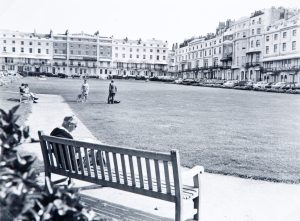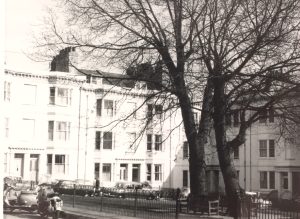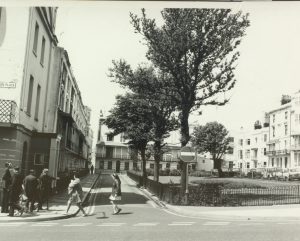Restoring the gardens after the war prompted a change in use. In December 1948, the borough council resolved to take over the maintenance of Russell Square’s garden and make it a public park. The managing committee of residents was wound up in May 1949.
In the autumn of 1952, the freehold of the garden in Clarence Square was transferred to Brighton Corporation. The council took charge of the maintenance and turned the garden into a public space. This did not go down well with everyone in Clarence Square. In 1954, twenty five residents petitioned the council not to install benches because it would encourage the public and destroy the garden’s privacy.
In Russell Square, too, the transition to a public garden was not universally welcomed. Throughout the 1950s, residents complained to the council about people using the garden as a short cut to Clarence Square, about dogs and children playing in the garden, and about littering.
Regency Square had already become a public garden, its managing committee having been wound up in 1944. Again, some residents were not happy about the change. In 1949, seven hoteliers petitioned the Chief Constable to stop children playing cricket and football on the Regency Square lawn. Other hoteliers petitioned for their children to be allowed to do so.
In the early 1950s, hoteliers complained that employees of Moore’s Garage in Regency Mews played football in the Regency Square garden during their lunch hour; and that pupils of St Margaret’s school in Queensbury Mews not only ran about and played games on the lawn, but had the audacity to use their coats to mark goal posts!
The problem was that the gardens had historically been sedate spaces, with rules forbidding boisterous games. Clearly, some residents and hoteliers felt that, public or private, the gardens were meant to be tranquil places.

Regency Square 1967, before the underground car park was built. James Gray Collection. Courtesy of The Regency Society.

Clarence Square 1960s. Royal Pavilion & Museums, Brighton & Hove.

Russell Square 1970. Royal Pavilion & Museums, Brighton & Hove.
